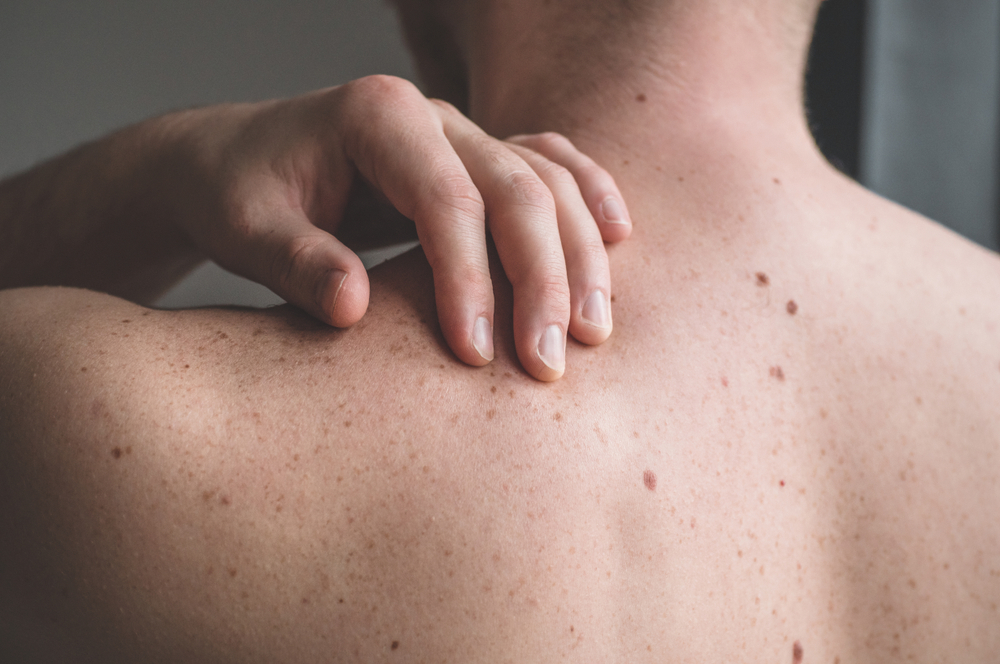- Chris Comans
- 2 Comments
Best Practices for Self-Skin Checks Between Professional Screenings
Living in Perth, Western Australia, we are fortunate to bask in an abundance of sunshine. However, with this beautiful weather comes the need to be vigilant about our skin health. Skin cancer is a significant concern in Australia, and regular skin screenings in Perth by a qualified practitioner are vital.
In addition to these professional checks, performing self-skin checks between appointments is essential for early detection and prevention. Here, we explore best practices for self-skin checks to ensure your skin remains healthy and safe.
Understanding the Importance of Self-Skin Checks
The Australian sun can be harsh, and the risk of developing skin cancer increases with prolonged exposure to UV rays. While professional screenings are crucial, they typically occur only once a year or biannually, depending on individual risk factors.
This is where self-skin checks come into play. Regular checks empower you to identify any changes in your skin early, allowing for prompt action and potentially life saving intervention.

When to Perform Self-Skin Checks
Consider setting a routine for your self-skin checks. Monthly checks are ideal, particularly after summer, when your skin has been exposed to intense sun. Additionally, any time you notice changes in your skin, such as new spots, changes in existing moles, or skin irritation, you should conduct a self-check. For those with a history of skin cancer or a family history, more frequent checks may be advisable.
Best Practices for Conducting Self-Skin Checks
1. Find a Well-Lit Space
Choose a bright, well-lit area for your self-skin check. Natural light is ideal, as it helps you see your skin more clearly. A bathroom with good lighting or a well-lit bedroom can work well. Ensure you have all the necessary tools at hand, such as a full-length mirror, a handheld mirror, and good lighting.
2. Use the Right Tools
In addition to mirrors, having a smartphone or camera can be helpful. Taking photos of your skin can provide a visual record to compare against in future checks. Ensure your camera is set to a high resolution, and take pictures of any spots or moles that seem unusual.
3. Know Your Skin
Familiarise yourself with your skin’s unique characteristics. Everyone’s skin is different, and understanding what is normal for you is crucial. Pay attention to the size, shape, colour, and texture of moles and spots. The ABCDE rule is a useful guideline for identifying potential issues:
- Asymmetry: One half of the mole doesn’t match the other.
- Border: Edges are irregular, ragged, or blurred.
- Color: The colour is not uniform and may include shades of brown, black, or even red.
- Diameter: The mole is larger than 6mm (about the size of a pencil eraser).
- Evolving: The mole changes in size, shape, or colour over time.
4. Inspect Your Entire Body
When conducting your self-skin check, make sure to examine your entire body. Pay special attention to areas that are often overlooked, such as:
- The scalp: Use a comb or your fingers to part your hair and check your scalp thoroughly.
- Behind your ears and neck.
- Under your arms and between your toes.
- The back of your legs and buttocks.
5. Be Thorough but Gentle
While it’s essential to be thorough, avoid being too aggressive. Gently feel for any unusual bumps or changes in texture. If you encounter any areas that feel different, take note of them for further observation or mention them during your next professional screening.
6. Keep a Record
Document your findings in a skin diary. Note the date, any changes you observed, and photographs of any concerning spots. Keeping a record allows you to track changes over time and can be invaluable when discussing your skin with a qualified practitioner.
7. Don’t Hesitate to Seek Professional Advice
If you notice any changes that concern you, don’t hesitate to consult a qualified skin cancer screening practitioner. Early detection is key, and it’s better to be safe than sorry. Remember, your skin health is paramount, and seeking professional guidance can provide peace of mind.
The Role of Qualified Practitioners
While self-skin checks are vital, they should complement, not replace, professional screenings by qualified skin cancer practitioners like Skin Chx. These professionals have the expertise and tools to assess your skin thoroughly and provide tailored advice based on your individual risk factors. Regular appointments ensure that any suspicious changes are monitored and addressed appropriately.
Conclusion
In Australia, where sunny days are abundant, being proactive about skin health is essential. Regular self-skin checks are a simple yet effective way to stay on top of your skin health between professional screenings.
By understanding your skin, knowing what to look for, and documenting any changes, you can empower yourself to take control of your skin health. Remember, the sun is a friend, but we must be mindful of its potential dangers. Stay vigilant, and let’s enjoy our beautiful Australia sunshine safely!


Understanding Melanoma: Insights from the Skin Cancer Audit Research Database - SkinChx
Children and Cancer: Teaching Sun Safety from a Young Age